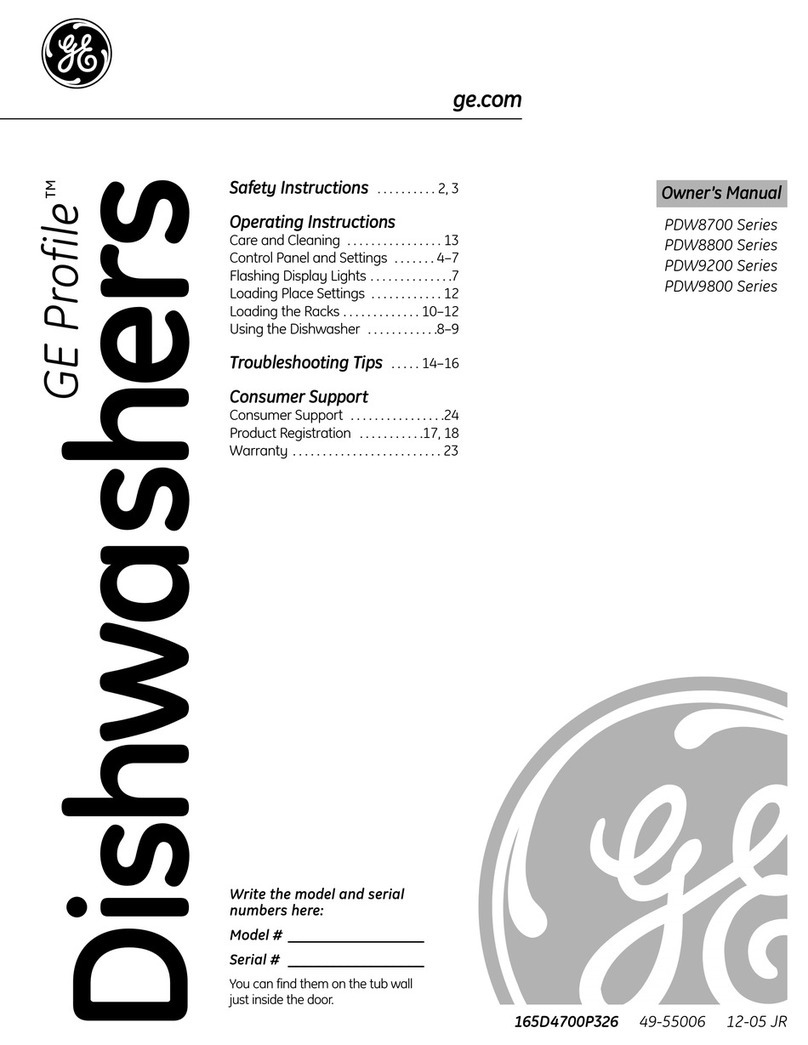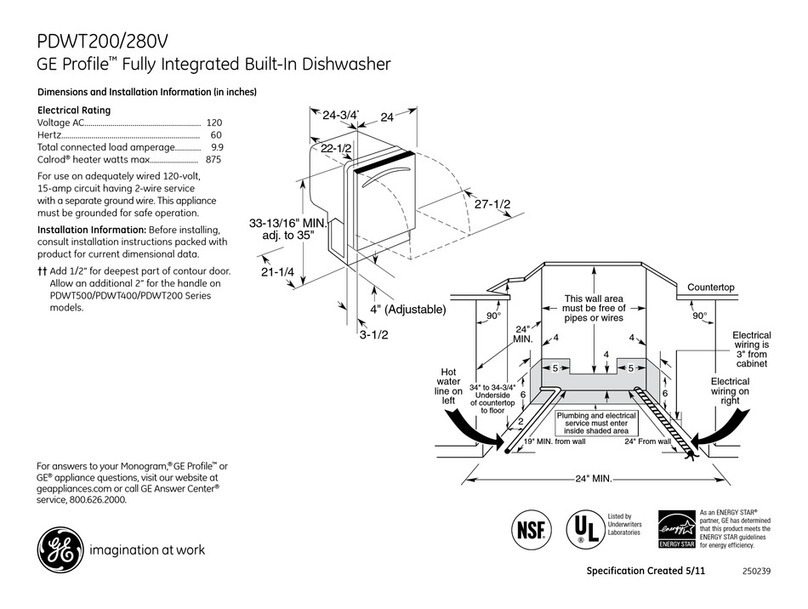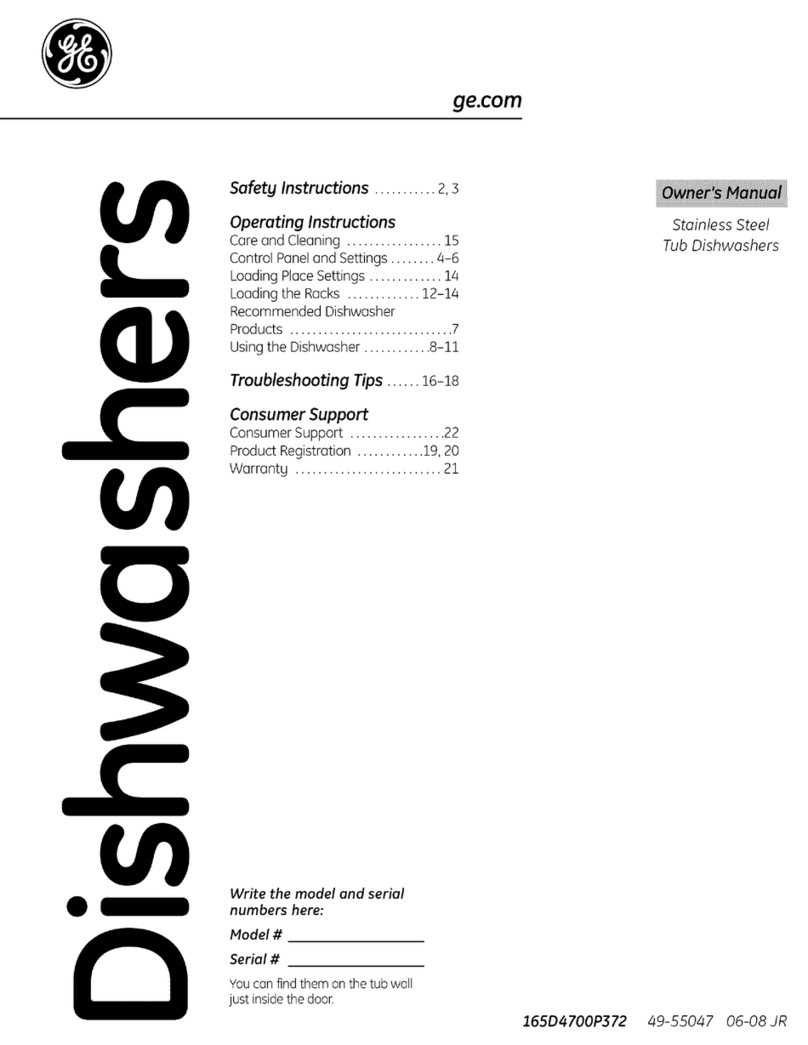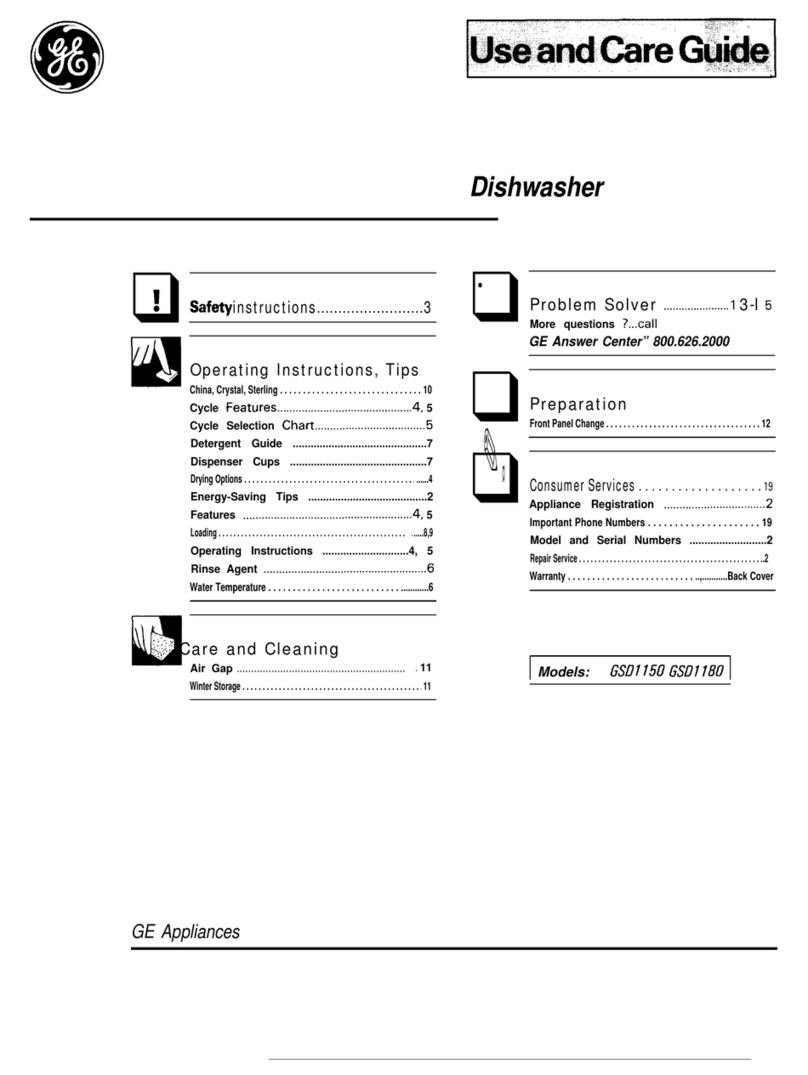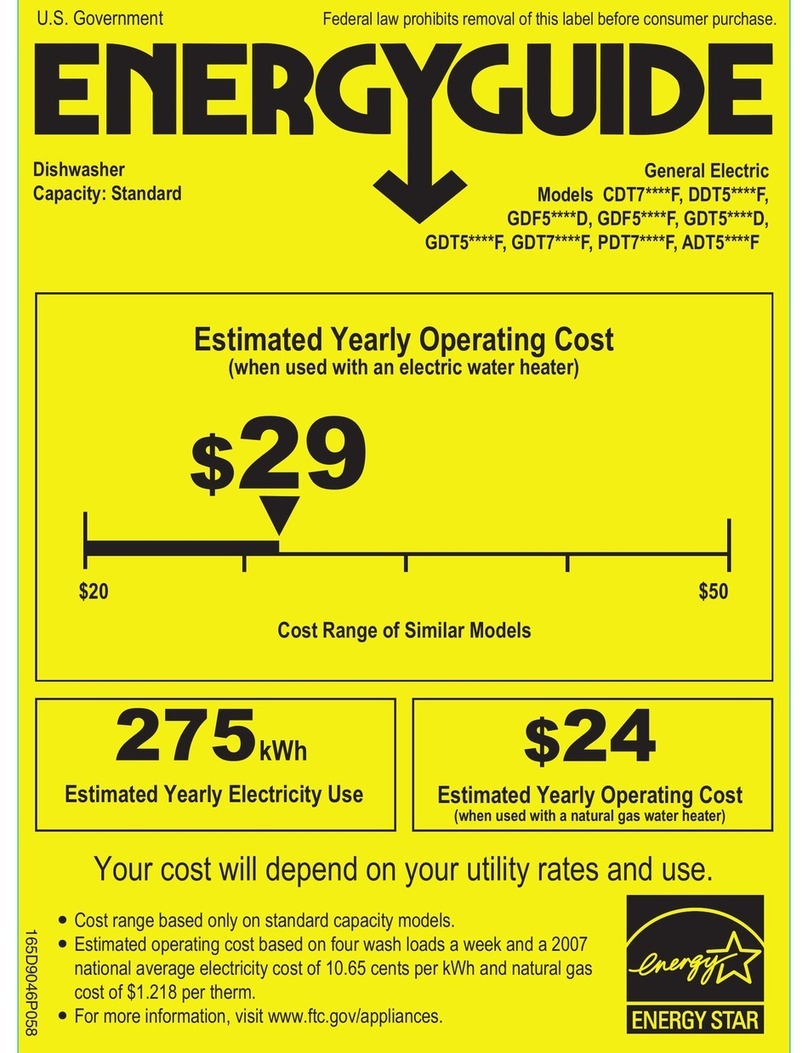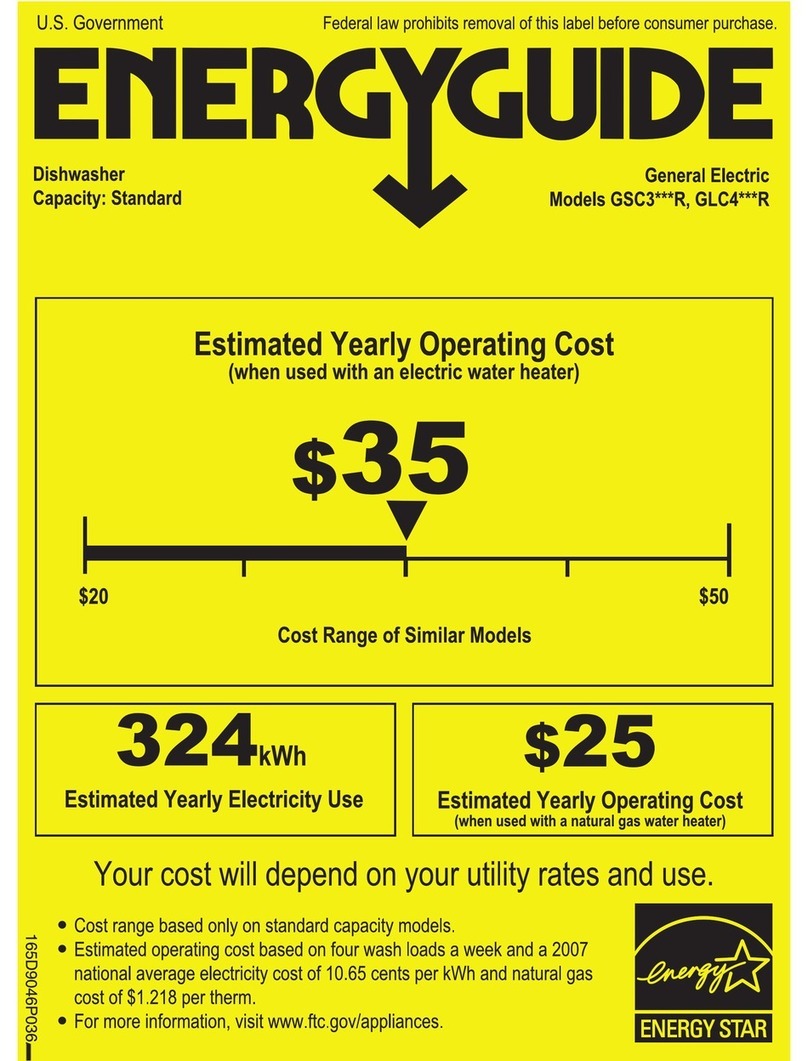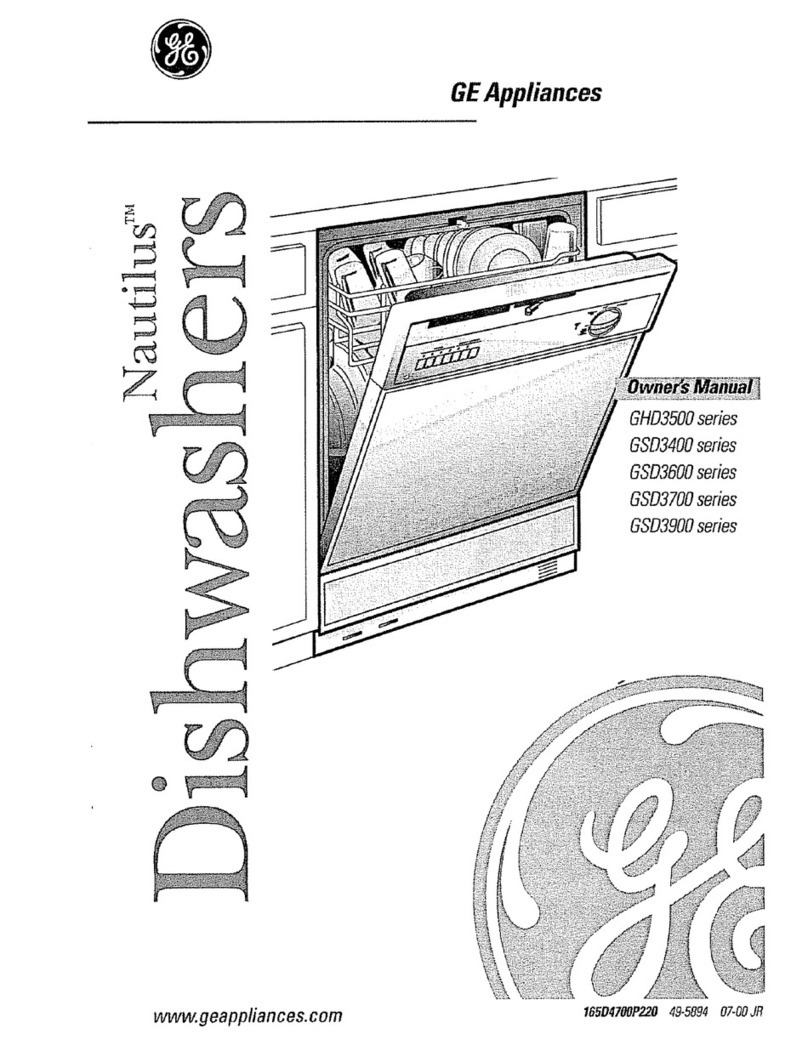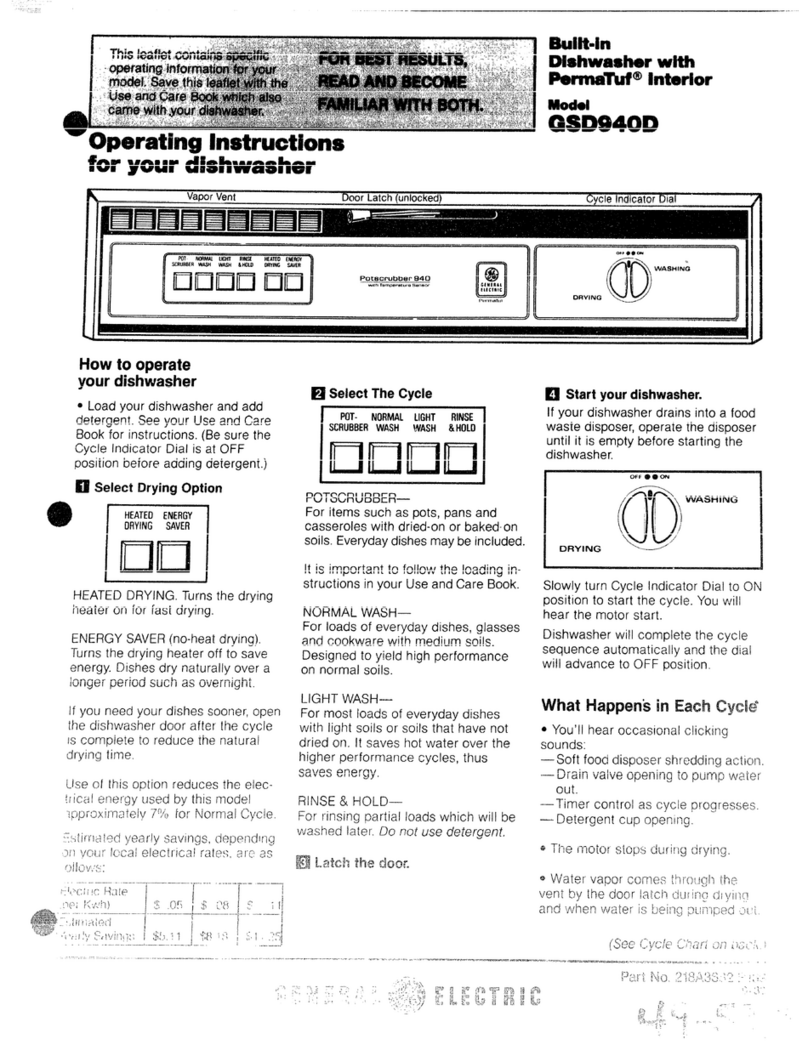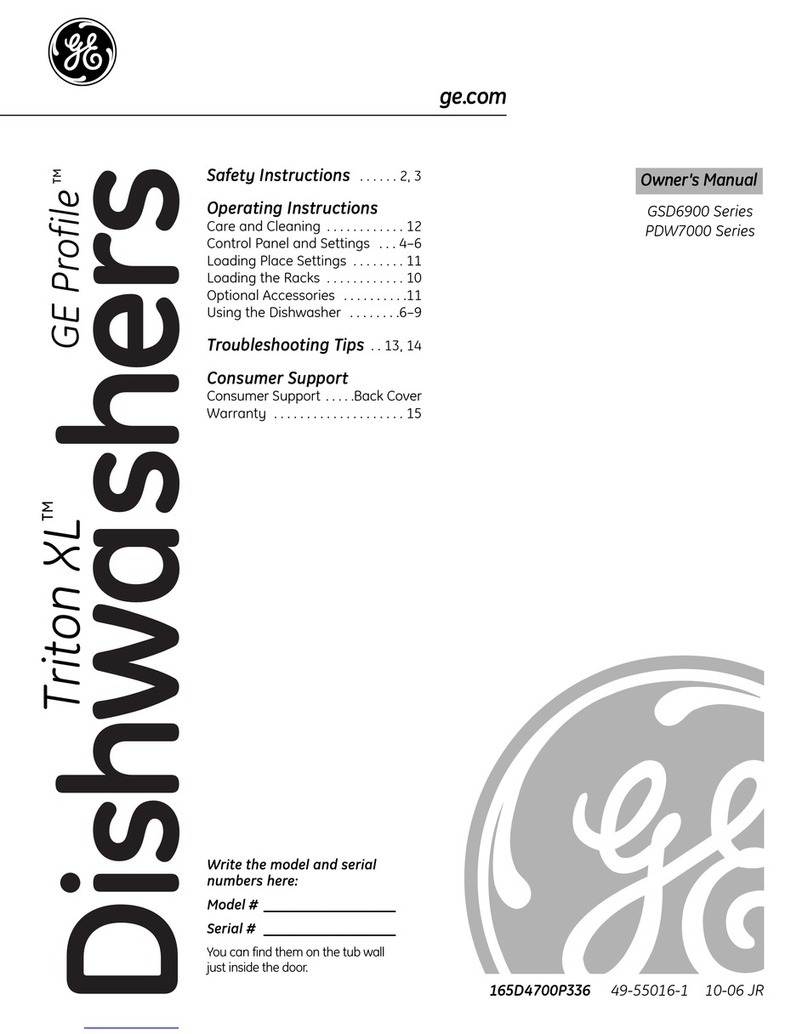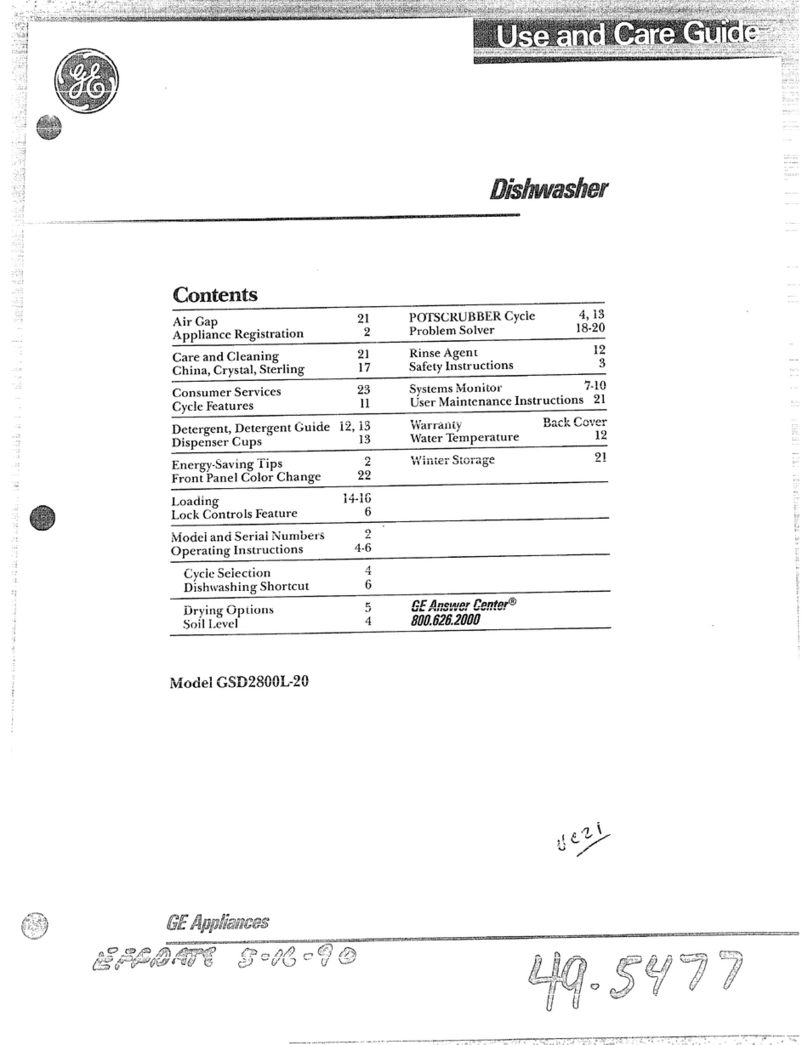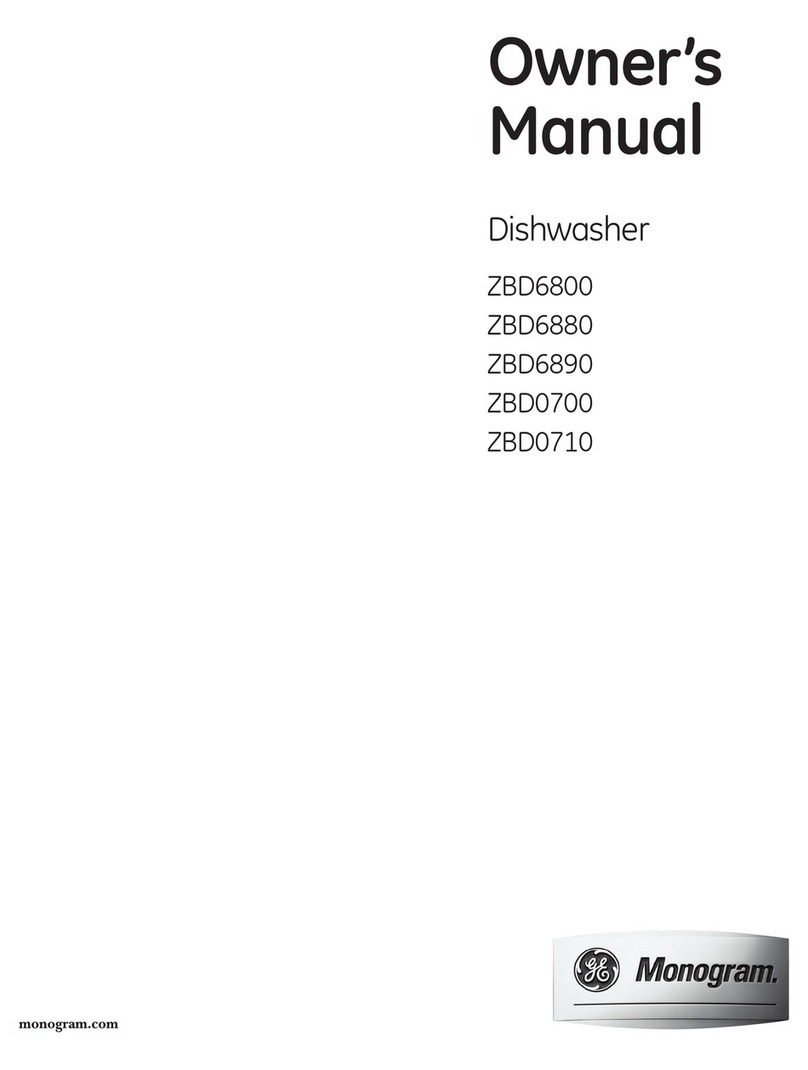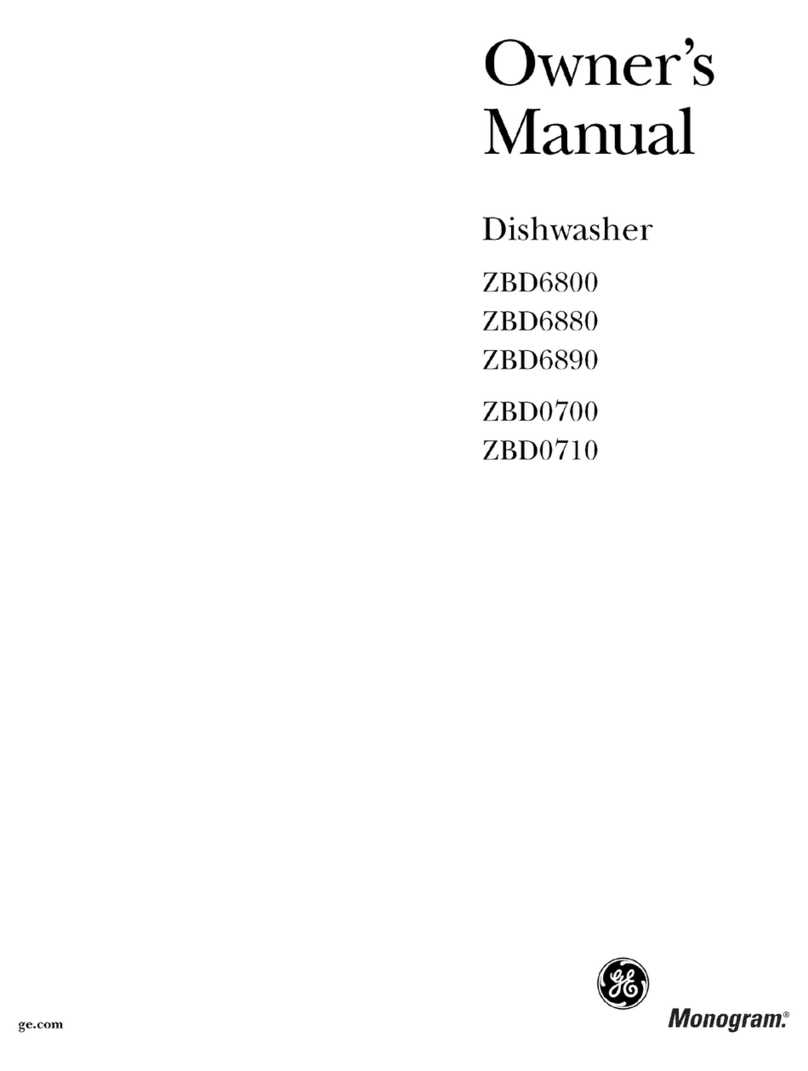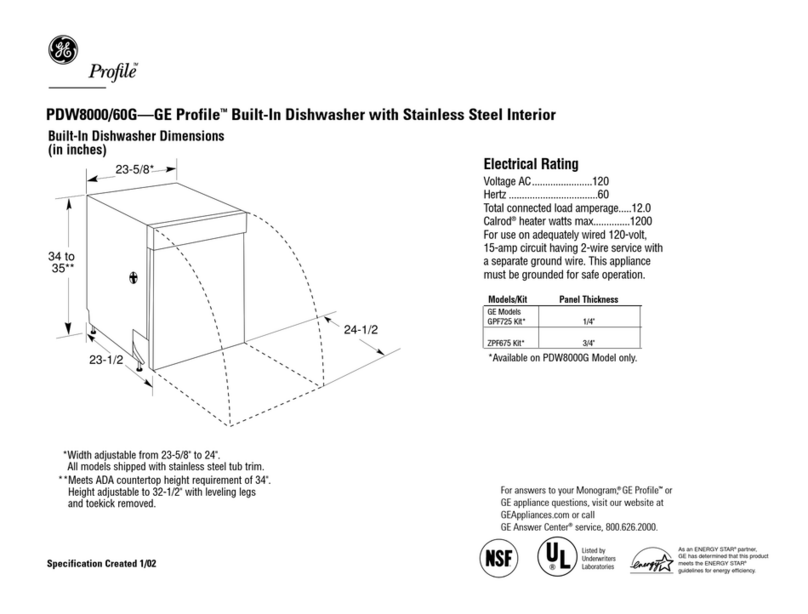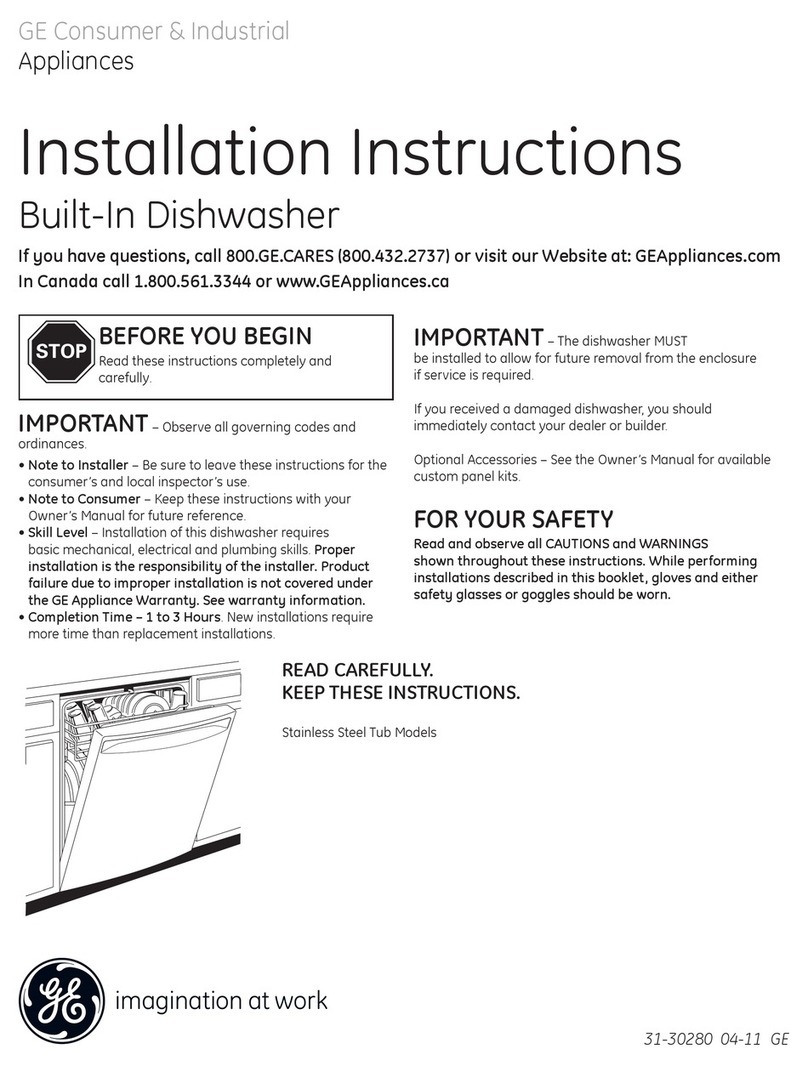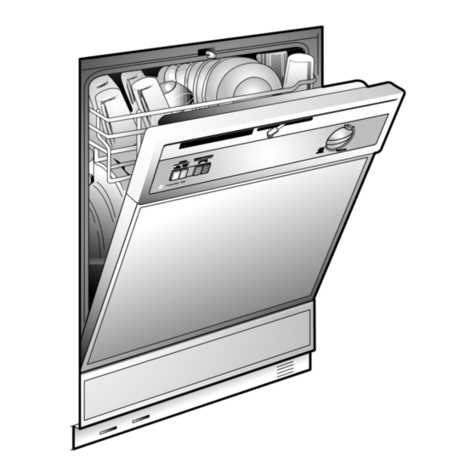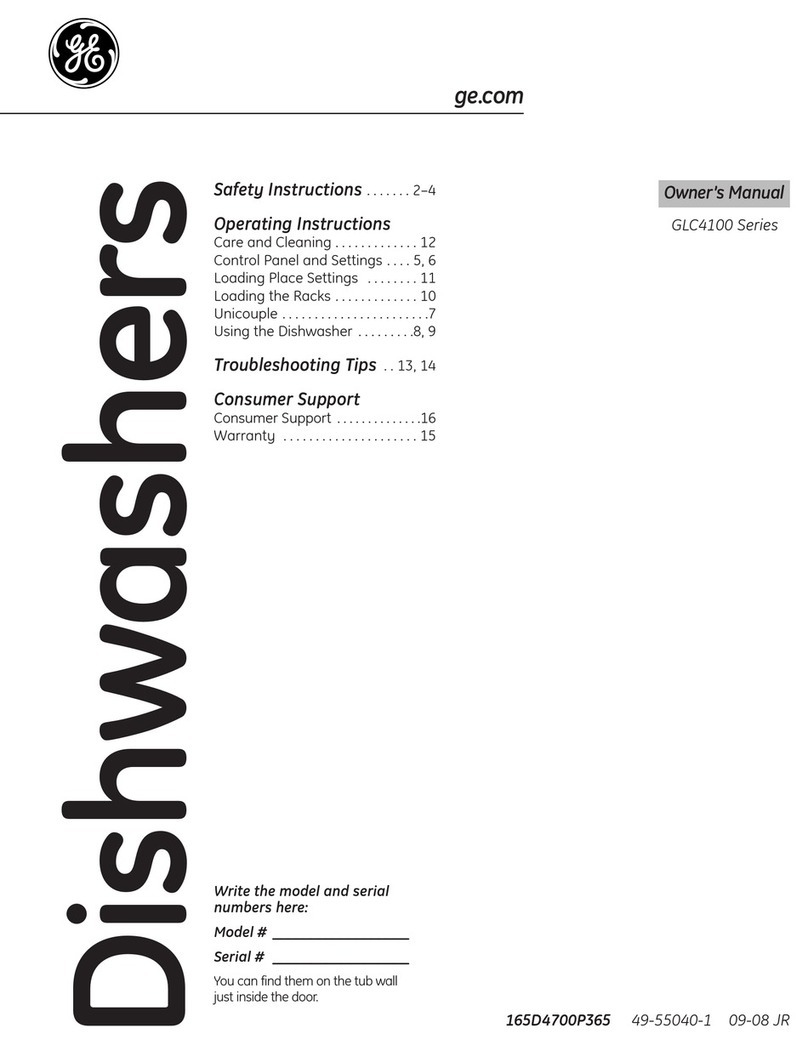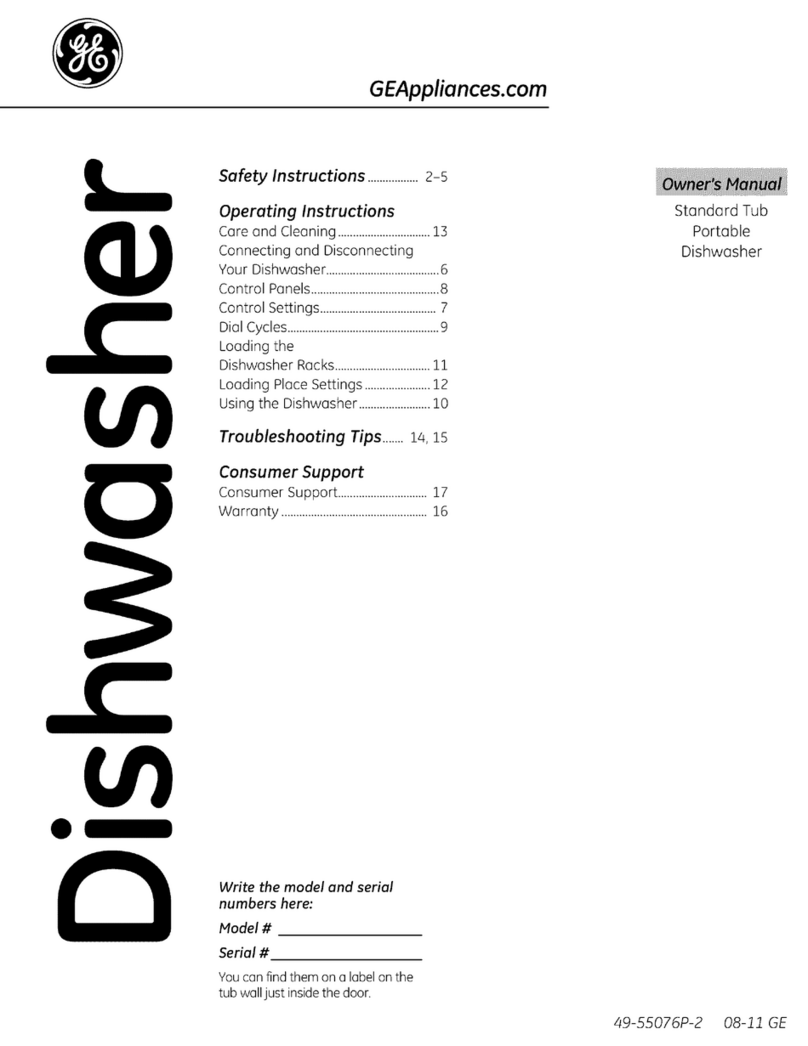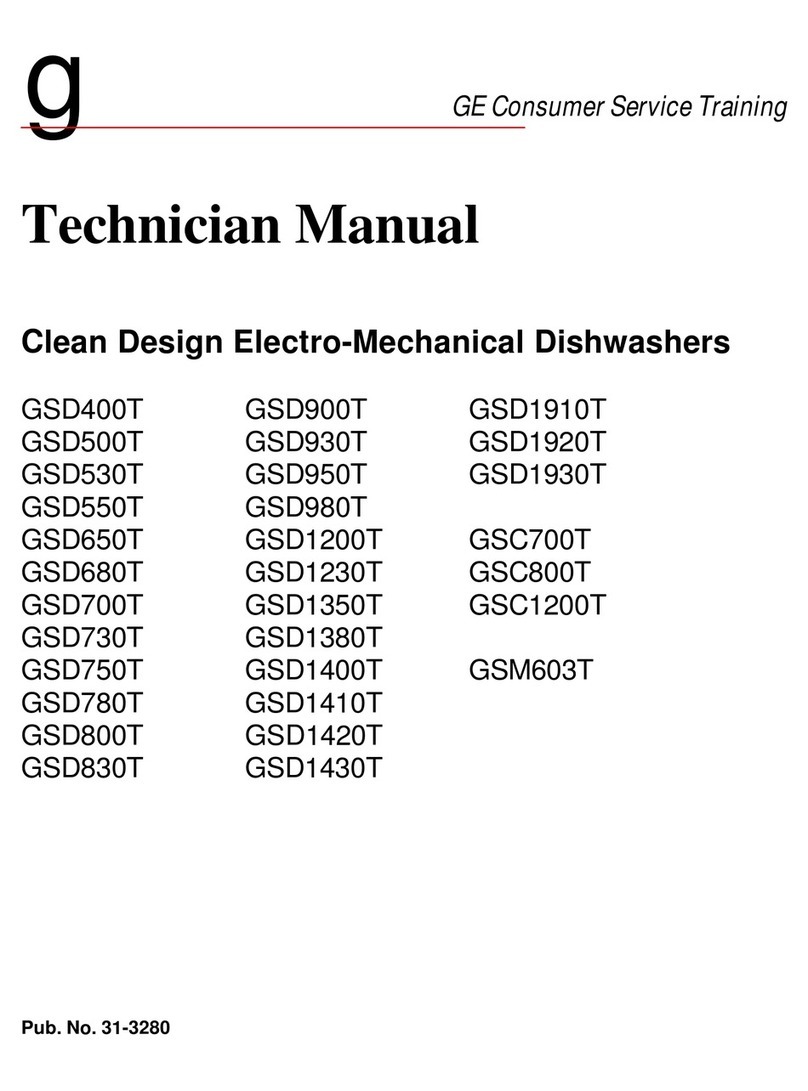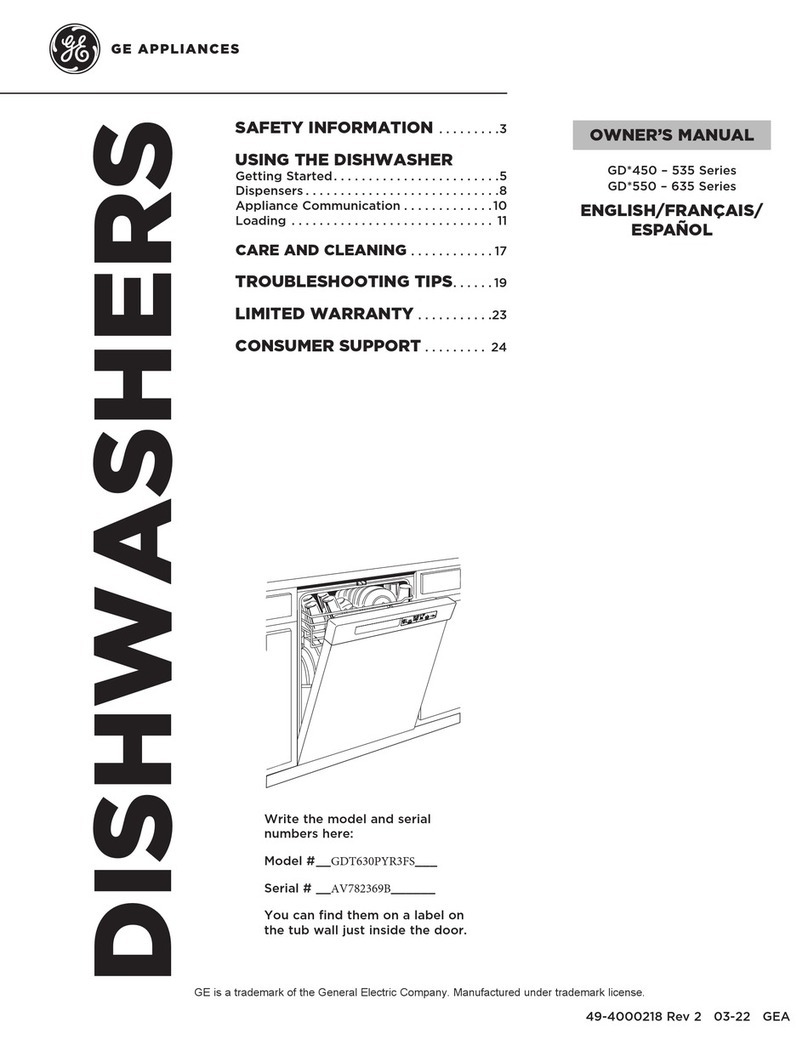
IMPORTANT SAFETY INFORMATION.
READ ALL INSTRUCTIONS BEFORE USING —
SAVE THESE INSTRUCTIONS
WARNING!
For your safety, the information in this manual must be followed to minimize the risk of fire,
explosion, electric shock, and to prevent property damage, personal injury, or death.
WATER HEATER SAFETY
PROPER INSTALLATION AND MAINTENANCE
This dishwasher must be properly installed and located in accordance with the Installation
Instructions before it is used. If you did not receive an Installation Instructions sheet with
your dishwasher, you can receive one by visiting our website at GEAppliances.ca.
nContents washed in Anti-bacterial mode, if
available, may be hot to the touch. Use care
before handling.
nUsing a detergent that is
not specifically designed
for dishwashers will cause
the dishwasher to fill with
suds.
nIf your dishwasher is connected to a
wall switch, ensure that the switch is
on prior to use.
nOn dishwashers with electronic
controls, if you choose to turn the wall
switch off between wash cycles, allow
5–10 seconds after turning the switch on
before touching ON/OFF to allow the control to
reboot.
nNon-Dishware Items: Do not wash items such
as electronic air cleaner filters, furnace filters
and paint brushes in your dishwasher. Damage
to dishwasher and discoloration or staining of
dishwasher may result.
nClose supervision is necessary if this appliance
is used by or near children.
nLoad light, plastic items so they will not become
dislodged and drop to the bottom
of the dishwasher—they might come into
contact with the heating element and be
damaged.
nConnect the dishwasher/appliance to a grounded
metal, permanent wiring system; or run an
equipment-grounding conductor with the circuit
conductors and connect to the equipment-
grounding terminal or lead of the appliance.
nImproper connection of the equipment-grounding
conductor can result in a risk of electric shock.
Check with a qualified electrician or service
representative if you are in doubt whether the
appliance is properly grounded.
nDispose of discarded appliances and shipping or
packing material properly.
nDo not attempt to repair or replace any part
of your dishwasher unless it is specifically
recommended in this manual. All other servicing
should be referred to a qualified technician.
nTo minimize the possibility of electric shock,
disconnect this appliance from the power supply
before attempting any maintenance.
NOTE: Turning the dishwasher off does not
disconnect the appliance from the power supply.
We recommend having a qualified technician
service your appliance.
WARNING!
CAUTION: To prevent minor injury or property damage
Under certain conditions, hydrogen gas may be produced in a water heater that has not been used
for two or more weeks. HYDROGEN GAS IS EXPLOSIVE.
If the hot water has not been used for two or more weeks, prevent the possibility of damage or
injury by turning on all hot water faucets and allow them to run for several minutes. Do this before
using any electrical appliance connected to the hot water system. This simple procedure will allow
any built-up hydrogen gas to escape. Since the gas is flammable, do not smoke, use an open flame,
or use the appliance during this process.
2





